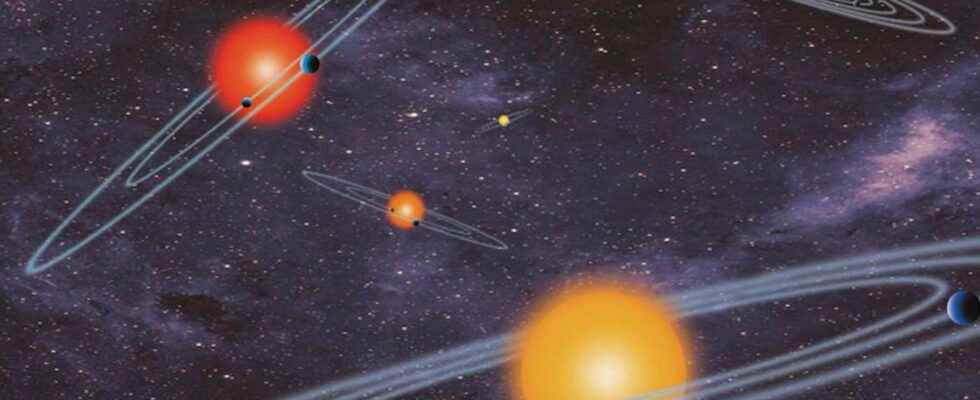You will also be interested
[EN VIDÉO] Exoplanets What are exoplanets, where are they found and why are they so interesting? Video answer!
In 1995, astronomers announced that they had flushed out a planet in orbit around a star other than our Sun. A shot of thunder! Since then, scientists have discovered many more. About 5,000 in our Galaxy. And probably rather 5,000 minus 3 – even minus 4. Because researchers from Massachusetts Institute of Technology (MIT, USA) today report that three exoplanets and maybe even four, identified thanks to the Kepler space telescopeare actually more likely to be very small stars.
Let us recall that there is a mass limit which makes it possible to distinguish a planet from a star. “Twice the mass of Jupiter it’s starting to look suspicious”comments Prajwam Niraula, the lead author of the study, in a press release from MIT. Because above this mass, the temperature and the pressure at the heart of the object become such as reactions of nuclear fusionare initiated. A star then lights up. Evaluating the size and mass of an object therefore appears crucial to confirm it as an exoplanet.
What tipped off astronomers at MIT was first of all a strange signal returned by Kepler-854b. What they were looking for, then, was to identify systems showing signs of tidal distortion – which occurs when the gravitational pull of one object causes another, close to it, to form a egg. “This gives an idea of the mass of the smallest of the objects in question”, says Prajwam Niraula. This is how he literally came across Kepler-854b. “The object presents a huge ellipsoidal signal. Pretty immediately we knew it couldn’t have come from a planet.”explains Avi Shporer, a researcher at MIT.
We have lost 3 exoplanets.
According to a new analysis the objects Kepler-854b, Kepler-840b & Kepler-699b seem to be too big to be exoplanets after all. That means they must be stars. The 4th object, Kepler-747b, is a borderline case that may take a bit more info to resolve. 1/
— Erika (@_AstroErika) March 17, 2022
An updated catalog of exoplanets
So the team did some checking. When Kepler-854b was identified in 2016, the stellar data available was not as precise as that which we have today, in particular thanks to the Gaia mission. The size of the object was estimated based on the then known size of its host star. By the method of transits . It consists of determining the size of an object from the drop in brightnessrecorded for the star in the background. But the new data available to astronomers now shows that Kepler-854b reaches a size of the order of three times that of Jupiter . “It is impossible that theuniversecould create a planet of this size”, assures Avi Shporer. What was thought to be an exoplanet is actually just a small star orbiting a larger one.
The surprise passed, the researchers wanted to know if there was, in the catalog of exoplanets, other possible errors of this kind. To find the answer, they went in search of stars whose size was revised thanks to the measurements of the Gaia mission. They found three. With supposed planets in orbit which ultimately display a size between two and four times the size of Jupiter. Kepler-840b and Kepler-699b have left the ranks of exoplanets to join those of small stars.
Doubt persists for Kepler-747b. The size of the object has indeed been re-evaluated to 1.8 times that of Jupiter. So close to the famous star/planet boundary. But leaning a priori more on the exoplanet side. Yet astronomers note that Kepler-747b orbits very far from its supposed host star. Too far to be such a big planet.
The corrections made by MIT researchers will be useful, in particular to those who rely on the list of exoplanets to study the population as a whole. To ensure correct results for them, it is better to avoid intruders. But what “false positives” slipping into the data should happen less and less often, they assure us. Thanks to a sensitivity of the instruments that continues to progress.
Interested in what you just read?
